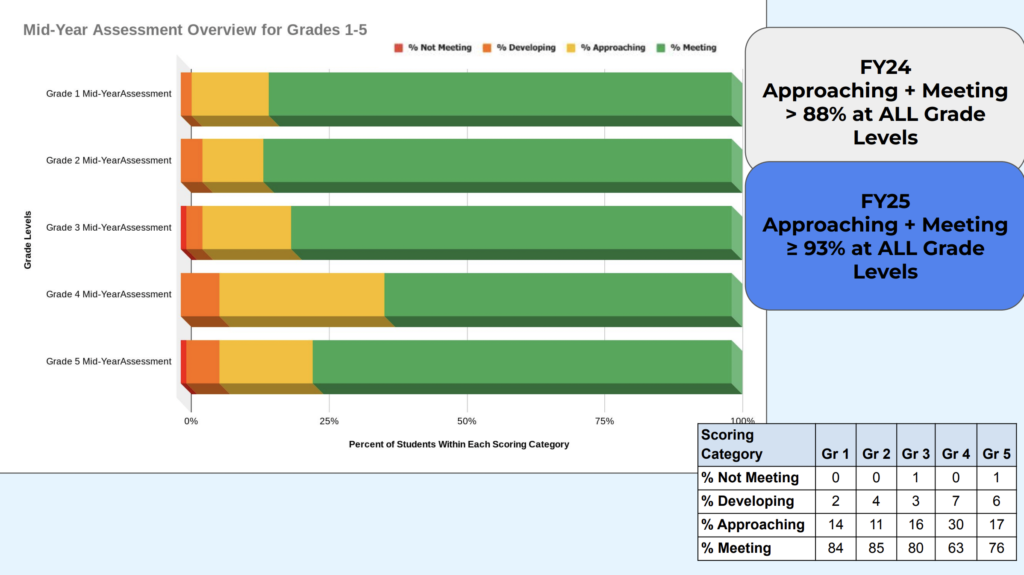Share This Article
The April 14 meeting of the Sudbury Public Schools (SPS) School Committee featured an exhaustive presentation on academic benchmarking. The presentation focused on social and emotional learning, mathematics, and English language arts. The actionable portion was mathematics. The administration proposed a change to the grade seven math curriculum following the benchmarking presentation.
Grade seven at Ephraim Curtis Middle School wasn’t the only grade highlighted that evening. District parents provided public comment on the class sizes in grade four class sizes at Haynes Elementary school. Parents reported class sizes of 27 students, exceeding the upper end of the district guidelines.
Grade four was also one of the areas of concern in the math benchmarking. 30 percent of students in grade 4 were in the “approaching” benchmark category—roughly double that of all other grades assessed. 63 percent of fourth grade students were in the “meeting” category, which is a drop of roughly 20 percent from grades one through three.

The presentation demonstrated a clear drop at the fourth grade level with regard to the number of students meeting benchmark expectations.

While the data was cause for concern, the administration offered some reassurances by way of fictional data. They explained that 18 percent of the students in the “approaching” category were within one point of the “meeting” category. If you simply add a point to their scores, grade four actually improved by a percentage point from last year’s real data to the new fictional data for this imaginary FY2025.

Next up, the committee heard a presentation on proposed changes to the grade seven math curriculum. The committee approved a plan to break the grade seven math curriculum into two different tracks because the current curriculum crams too much content into a single year, which the administration reported was hurting outcomes for students and causing significant stress.
The new approach will bifurcate grade seven math into two paths. There will a standard grade seven mathematics for most students, and a compacted/accelerated option.

In order to get into grade eight algebra, new pathways were created for students who take the grade seven mathematics course. The compacted course qualifies students for grade eight algebra, but those who take regular grade seven mathematics will need to do a little extra to get in. Options include taking a trimester UA math course, doing an online class on their own, or testing into the eighth grade algebra course.

Committee members voiced concerns about an asynchronous online learning option, but ultimately voiced comfort with trying something different. Chair Nicole Burnard said “I don’t love the asynchronous. I think if it’s part of our curriculum it should be taught by a teacher in a classroom. But I obviously understand the last four years has not worked, so we need to do something to better service our students. I would be willing to try it based on that.” (2:23:50)

